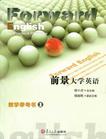前景大学英语教学参考书
出版社:复旦大学出版社 作者:徐小贞,邹渝刚 编 页数:365
内容概要
《前景大学英语》系列教材是复旦大学出版社与众多重点大学外语教师最新合作成果。教材编写组成员均来自国家级教学团队,参与完成了第一批国家示范性建设项目,目前正积极投身于方兴未艾的大学英语教学改革。因此,本系列教材从选材到体例均融入了大学英语教学改革的最新理念。本系列教材包括《综合教程》、《教学参考书》、《自主练习》各四册,以及配套光盘,内容涵盖《大学英语课程教学要求》所涉及的英语听、说、读、写、译等基本技能以及实用阅读和实用写作的内容。
书籍目录
1 College2 Food3 Learning4 Sports5 Distal Age6 Environment7 Fashion and Beauty8 CareerGlossary
章节摘录
4 Kinaesthetic learners can have the most difficulty in learning,because traditional schools don't take them into account as much as they do to auditory and visual learners,3 especially past elementary age. My little brother is a kinaesthetic learner, and it showed from an early age.Even when beginning to read he would prefer to do so while walking around the house, as if the motion of walking would somehow help him read. And more than any other kid I've seen, during the age of primary school he liked to act out stories with his toys. 5 What does all this have to do with learning English? By finding out your preferred learning style, you can tailor your studies to emphasize what works best. 6 Visual learners can usually learn things by rote using books and flashcards. One way they can improve their listening skills is to use computer programs or video players to provide subtitles or other visual clues to what they're hearing. 7 Auditory learners may have the easiest time in developing conversation skills. They benefit more than other types of learners by listening to tapes, watching TV, or listening to the radio. 8 Kinaesthetic learners often need to use some sort of physical activity to help learn. For many, merely taking notes during class or from a textbook can help. They also do well to speak their lessons out loud, or use software that encourages interactivity. ……
图书封面
评论、评分、阅读与下载
